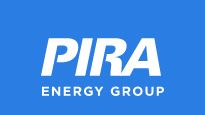 NYC-based PIRA Energy Group believes that oil prices have come under more downward pressure, as the global surplus looks likely to grow further through year-end. In the U.S., after a six-week run up, year-on-year U.S. inventory surplus had a significant decline. In Japan, crude runs continue to rise along with stronger demands. Specifically, PIRA’s analysis of the oil market fundamentals has revealed the following:
NYC-based PIRA Energy Group believes that oil prices have come under more downward pressure, as the global surplus looks likely to grow further through year-end. In the U.S., after a six-week run up, year-on-year U.S. inventory surplus had a significant decline. In Japan, crude runs continue to rise along with stronger demands. Specifically, PIRA’s analysis of the oil market fundamentals has revealed the following:
After Six-Week Run Up, Year-on-Year U.S. Inventory Surplus Has Significant Decline
Total U.S. commercial stocks, primarily crude, declined this week, narrowing the year-over-year surplus. Gasoline and jet stocks show a narrow surplus versus last year, although distillate still has a significant surplus. Total demand recovered to over 20.0 MMB/D this week, with strength is gasoline and jet, while distillate demand was very weak. PIRA (and others) were somewhat puzzled the change in sign of the crude balance item to -0.6 MMB/D, after averaging over 0.45 MMB/D for over 8 weeks. Since this balance item is a residual, all parts of the balance could have contributed to the move, but we suspect rebenchmarking to a new monthly final for December 4 data, along with some uncertainty in the timing of stocks versus import accounting, led to the big change.
LNG Price Drop Brings Out More Buyers
PIRA always likes to remind clients that even short- or medium-term changes in prices can have a long-term impact on both new contracts and decisions to build additional infrastructure. China aside, no place is this type of influence more on display than in the Mideast, which is offering the rare positive outlook for LNG demand amid domestic and regional gas shortages among countries looking to burn less oil, even at current prices.
Dry Weather and Looming Coal Retirements a Blessing for Gas-Fired Generation
PIRA remains optimistic about the recovery spark spreads. In Italy, the freshly updated official statistics suggest that extremely dry weather has contributed to drive the increases in day ahead prices over the past month, as hydro output is near a 10-year low. Going forward, Italian prices may also be impacted by the acute hydro shortfall in Switzerland, while Swiss nuclear output is still constrained.
Limited Bullish Catalysts for European Carbon
Warmer weather is suppressing short-term demand, but a short-term price rise (in thin markets) could follow the final 2015 auction, subsiding in January when auction volumes rise. Auction supply will be rising every year through 2018, and demand looks weak. We are not expecting any price reaction from the Paris talks. Long term implied CO2 prices are expected to be far lower for the rest of Phase III and Phase IV, limiting upward price potential for EUAs, absent further intervention.
Falling Oil Prices Push Coal Lower
Coal pricing once again experienced significant week-on-week declines, with 1Q16 API#4 and FOB Newcastle prices each sliding by $1.45/mt, while API#2 prices declined by just $0.70/mt after exhibiting the most downside in pricing over the previous several weeks. Plunging global oil prices and a sharp decline in China’s thermal coal imports were the impetus for the downturn in pricing this week. Potential for a rise in pricing is considerably limited with low oil prices and a lack of reaction by both supply and demand from the weakness in pricing.
U.S. LPG Prices Fall with Crude, Natural Gasoline Remains Stable
Mt Belvieu LPG prices fell in tandem with WTI last week, with January propane losing 10% week-on-week and butane falling 11% to 56.3¢/gal. Natural gasoline at the Gulf Coast market center held strong, decreasing by just 1.6%, having taken its cues from NYMEX RBOB which managed to gain fractionally in last week’s energy price carnage.
Better Data from Emerging Markets, but Challenges Remain
Chinese economic data releases for November were better-than-expected, though fragilities remained in key sectors (housing and exports). Most emerging economies reported third quarter GDP data by now, and they were constructive by and large. Looking to 2016, however, challenges remain. One issue is elevated private sector debt levels (especially in emerging Asia), and an increasing need to curb borrowing. There are also concerns about how emerging markets will actually react to the upcoming U.S. monetary tightening.
Inventories Drew After Building for Five Straight Weeks
The week ending December 4, U.S. ethanol production rebounded to 993 MB/D from a five-week low 956 MB/D during the preceding week. Inventories were drawn by 168 thousand barrels to 19.8 million barrels, breaking a streak of five consecutive weekly builds.
WASDE Offers Few Changes
PIRA doesn’t see the corn crop getting smaller in the all-important January report, so the obvious focus is on demand from here on out. This week’s reduction in exports was warranted, an increase in ethanol grind not so much.
Asia-Pacific Oil Market Forecast
Oil prices have come under more downward pressure, as the global surplus looks likely to grow further through year-end. Any substantial and sustained improvement will wait until Iran fully returns to oil markets and the global surplus, now pushing 500 MMBbls, shows signs of appreciably lessening.
3Q15 U.S. Gas Producer Survey: Appalachia Still Helping Keep Production Afloat
Despite extreme price weakness and steep related cuts in capital spending, the 51 companies included in PIRA’s Gas Producer Survey (“PIRA Group”) managed to realize moderate sequential and year-on-year U.S. gas production growth in 3Q15, in contrast to the Group’s marginal losses experienced in the prior quarter. Driven in large part by the continued ramp up of Appalachian production, total domestic production was up quarter-on-quarter by ~1 BCF/D and year-on-year by 4.3 BCF/D. Based on PIRA’s overall assessment, production gains outside of the survey (“non-group companies”) were again more substantial. Even so, PIRA Group companies reported a collective ~1.7 BCF/D year-on-year 3Q15 production increase; while less than prior quarters gains, an impressive feat considering the price environment.
Eastern Grid/ERCOT Market Forecast
A solid majority of eastern power markets saw m/m price declines in November as gas prices fell and loads remained weak. Gas prices were down in all markets with Henry Hub averaging below $2.10/MMBtu, the lowest monthly average since April 2012. On a year-on-year basis. Loads in the East fell by over 20 aGW as temperatures averaged above normal across the region. With gas prices down sharply, gas-fired generation rose by 20 aGW while coal dropped by over 30 aGW and oil also moved down. Looking ahead, gas prices have been revised down as continued mild weather may lead to a substantial storage overhang at the end of the heating season. Power prices are lower in all markets with the sharpest drops in New England and eastern NY winter prices.
EPA Regs in TX Pressuring Coal, Opportunity for Gas
EPA’s final Regional Haze Plan for Texas, did not change the costly requirements from last year’s proposal for new scrubbers and scrubber upgrades across 14 coal-fired units in a 3 to 5-year timeframe. The covered plant operating and retirement decisions can have major implications for reserve margins and natural gas demand. Litigation is inevitable, and PIRA believes the decision on the venue (which could come as early as 2Q16) could well determine whether the rule will ultimately be upheld.
Global Equities Broadly Lower
All our tracking indices lost ground on the week. In the U.S., utilities and consumer staples held up the best, but still declined. Banking and energy were the weakest performers. Internationally, all the tracking indices fared worse than the U.S. average. Emerging markets were the weakest, followed by China and emerging Asia.
D6 RIN Prices Come Back Down
U.S. ethanol prices were little changed the week ending December 4 as downside pressure from high ethanol inventories was balanced by soaring D6 RIN values, which are embedded in the assessments. D6 RIN assessments came down late in the week.
USDA Baseline Projections
Usually released during February in conjunction with its annual Outlook Forum, the USDA decided to release their so-called baseline projections for the next 10 years “early” this time around.
Japanese Crude Runs Continue to Rise, Along with Stronger Demands
Crude runs rose again in broad agreement with our turnaround schedules. Crude imports increased enough to provide for a small crude build. Finished product stocks also built slightly due to a large naphtha build more than offsetting declines in gasoline, gasoil and kerosene. There were strong demand gains in gasoil and kerosene which drove the resulting stock draws for those products. Refining margins remain strong, though cracks, other than naphtha, generally eased on the week.
Greek Gas Price Change to Impact Power Prices
An upcoming re-assessment in the price of Greek gas could depress power prices from Jan. by bringing down the cost of gas-fired generation below lignite-fired units, market participants said. Power producers in Greece buy gas from natural gas incumbent DEPA, with contracts indexed to Brent crude prices via an algorithm. DEPA carries out a readjustment every quarter.
Beyond the Capacity Auction, How the U.K. Mix is Changing
The second U.K. capacity auction – for delivery in 2019/20 – cleared at ₤18/KW versus ₤19.4/KW at last year’s auction. The outcome, once again, offers several implications for the U.K. energy mix, even in the shorter- and medium- term. While the future of several coal units is tied, in part, to the outcome of the auction, traditional combined cycle gas turbines (CCGTs) will now face additional competition from growing participation by distributed generation. A higher reliance on embedded generation adds a layer of risks – with the wholesale market most likely set to reflect those challenges down the road. Finally, the policy debate will continue to intensify on whether the introduction of the capacity market in the U.K. may effectively be beneficial for the system's reliability.
Financial Stress Grows
Financial stress grew substantially this past week. The S&P 500 fell sharply. All of the accompanying indicators also performed poorly, including Volatility (VIX), Russell 2000, high yield debt (HYG) and emerging market debt. The cautionary signal and underperformance that we noted last week with regard to high yield credit and emerging market debt proved prophetic this week. Commodities remain in a downtrend, though ex-energy has been rather flat as energy remains the strong drag to the overall complex.
Stock Surplus Widened in November
Commercial stocks in the three major OECD markets – United States, Europe and Japan – were close to flat in November, declining just 3 million barrels or 0.12% versus the prior month. So far in the fourth quarter stocks are down 4 million barrels, or 0.16%. This relatively flat stock profile compares with a typical decline over these two months. Also, the sharp increase in VLCC freight rates since September is clearly telling us there is more oil on the water. Thus, as expected, the global oil surplus continued to widen in November. By the end of the fourth quarter, PIRA is forecasting the global stock surplus will be 500 million barrels.
What will Drive the NBP–TTF spread for the Balance of Winter?
As we approach the midpoint of winter and the gas complex reaches new lows, it is easy to lose touch with the relationships among Europe’s multiple spot trading hubs. NBP and TTF remain the most important of these hubs, particularly now that the Dutch gas market’s role in the fundamental underpinning of the market is radically shifting. As absolute prices go down, spreads will narrow and when they do, implications will emerge on future flows and activity.
4Q15 Iraq Oil Monitor
The KRG stopped transferring crude to SOMO in Ceyhan, but ~600 MB/D of independent Kurdish exports continues to find its way to market. Meanwhile, a power struggle between Abadi and his political opponents persists, and the lack of reforms and fiscal stress are exacerbating tensions throughout the country. The fight against ISIS remains broadly stalemated. Ongoing Turkish military operations against the PKK in Syria, plus rising tensions between the PKK and KRG, are interrupting flows on the 650 MB/D export pipeline to Turkey. Southern operators are reviewing development plans after the oil ministry requested 2016 investment cuts at major fields. Strong November southern exports were supported by stocks accumulated in October (when bad weather limited exports) and the start of a fourth SPM.
Gas Flash Weekly
Despite Thursday’s bullish storage report, NYMEX price action underscores the market’s increasing concern over the intensity of the El Niño and the related potential for heating load shortfalls extending into next year. The evolving “super” El Niño clearly has increased the potential for unusually mild weather next quarter, but for the time being, PIRA’s Reference Case only assumes 5% fewer GWHDDs than the 10-year normal.
December Weather: The U.S., Europe and Japan Warm
At mid-month, December looks to be 21% warmer than the 10-year normal for the three major OECD markets, bringing the month oil-heat demand to 1030 MB/D below normal. On a 30-year-normal basis, the markets are 24% warmer.
The information above is part of PIRA Energy Group's weekly Energy Market Recap - which alerts readers to PIRA’s current analysis of energy markets around the world as well as the key economic and political factors driving those markets.
Click here for additional information on PIRA’s global energy commodity market research services.


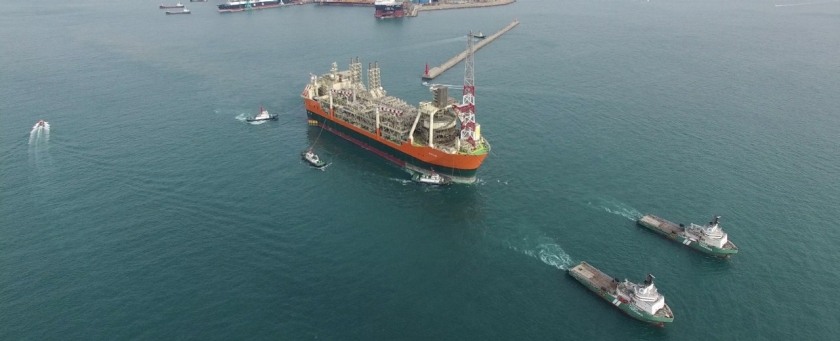 Amec Foster Wheeler announces today that it has been awarded three contracts by BP to provide services to the Glen Lyon Floating Production, Storage and Offloading (FPSO) vessel as part of the Quad 204 Project, located 175 km west of the Shetland Isles, UK. The three reimbursable contracts are worth £31.5 million and will create 100 onshore and 50 offshore jobs.
Amec Foster Wheeler announces today that it has been awarded three contracts by BP to provide services to the Glen Lyon Floating Production, Storage and Offloading (FPSO) vessel as part of the Quad 204 Project, located 175 km west of the Shetland Isles, UK. The three reimbursable contracts are worth £31.5 million and will create 100 onshore and 50 offshore jobs. Shellard has more than 16 years of experience in offshore construction and subsea engineering. He joined OIS as vice president, operations, in December 2014, and was instrumental in leading OIS’ recent successful well decommissioning campaign with Centrica Energy and Antrim Energy. Prior to joining OIS, Shellard was project director at Technip Offshore Wind Ltd, where he oversaw all projects and tenders in the company’s cables and marine renewables sector.
Shellard has more than 16 years of experience in offshore construction and subsea engineering. He joined OIS as vice president, operations, in December 2014, and was instrumental in leading OIS’ recent successful well decommissioning campaign with Centrica Energy and Antrim Energy. Prior to joining OIS, Shellard was project director at Technip Offshore Wind Ltd, where he oversaw all projects and tenders in the company’s cables and marine renewables sector.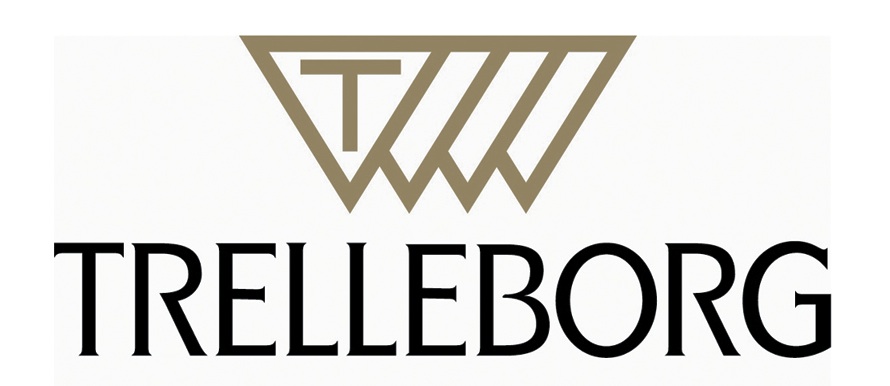 Trelleborg
Trelleborg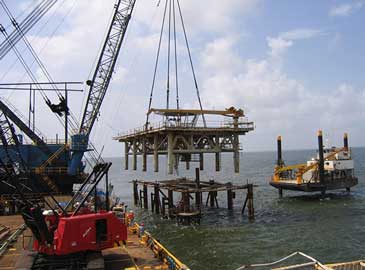 The Bureau of Safety and Environmental Enforcement (BSEE) has announced that offshore oil and gas lessees and owners of operating rights are now required to submit summaries of their actual expenditures for the decommissioning of wells, platforms and other facilities on the Outer Continental Shelf (OCS) as part of the final Decommissioning Costs Rule.
The Bureau of Safety and Environmental Enforcement (BSEE) has announced that offshore oil and gas lessees and owners of operating rights are now required to submit summaries of their actual expenditures for the decommissioning of wells, platforms and other facilities on the Outer Continental Shelf (OCS) as part of the final Decommissioning Costs Rule. Halliburton
Halliburton NYC-based
NYC-based  Anadarko Petroleum Corporation
Anadarko Petroleum Corporation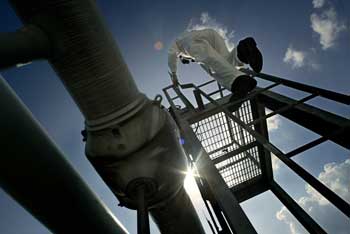 Pipeline development projects are becoming increasingly complex, spanning longer and deeper terrains. Pipelines must operate at higher pressures and temperatures, in harsher environments and to stricter regulatory requirements. Projects must also be feasible in a cost-constrained market. DNV GL is inviting industry players to take part in two Joint Industry Projects (JIP) to help the industry work more efficiently while maintaining safety.
Pipeline development projects are becoming increasingly complex, spanning longer and deeper terrains. Pipelines must operate at higher pressures and temperatures, in harsher environments and to stricter regulatory requirements. Projects must also be feasible in a cost-constrained market. DNV GL is inviting industry players to take part in two Joint Industry Projects (JIP) to help the industry work more efficiently while maintaining safety.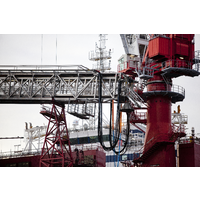 DNV GL
DNV GL Following the announcement of Douglas-Westwood joining the ESIA Group on 7th December, we were delighted to be able to exhibit with our new colleagues at PROSPEX 2015 in London on 9th and 10th December. Together with ESIA members Hannon Westwood, Novas Consulting and Richmond Energy Partners, we looked to showcase the group’s well-established E&P consulting and analytics offering alongside DW’s respected oilfield service-focused capabilities.
Following the announcement of Douglas-Westwood joining the ESIA Group on 7th December, we were delighted to be able to exhibit with our new colleagues at PROSPEX 2015 in London on 9th and 10th December. Together with ESIA members Hannon Westwood, Novas Consulting and Richmond Energy Partners, we looked to showcase the group’s well-established E&P consulting and analytics offering alongside DW’s respected oilfield service-focused capabilities.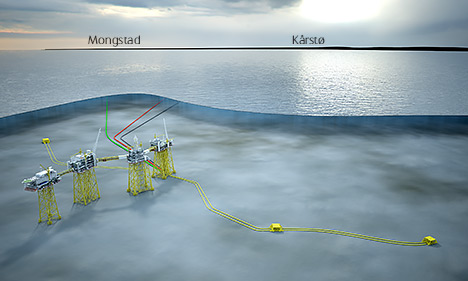 Statoil
Statoil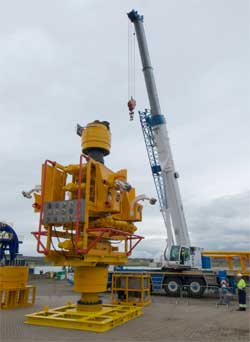 Freddy Gebhardt, Wild Well (left) and Mike Munro, NorSea Group (UK Wild Well Control’s WellCONTAINED System
Freddy Gebhardt, Wild Well (left) and Mike Munro, NorSea Group (UK Wild Well Control’s WellCONTAINED System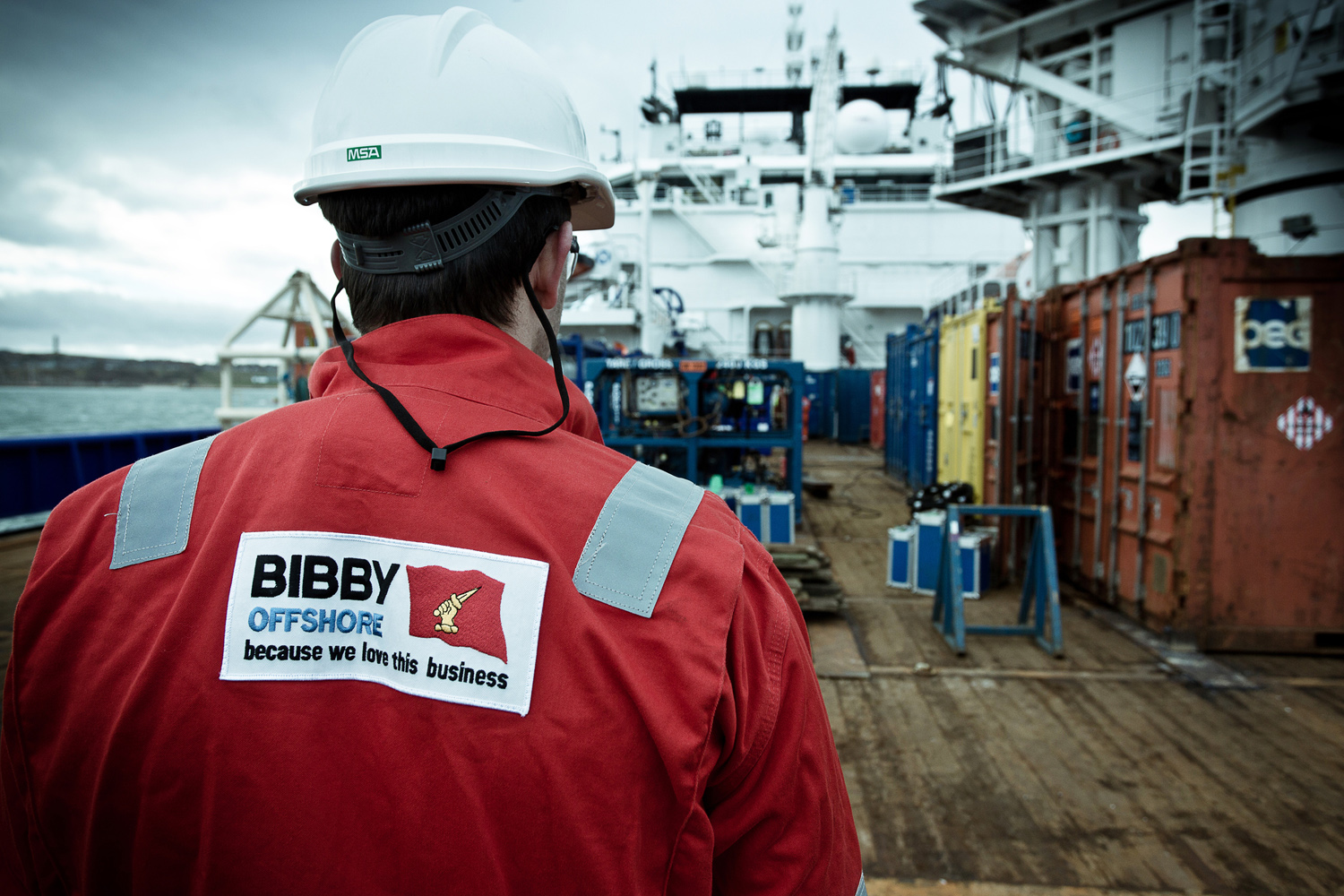
 Howard Woodcook, Chief Executive Bibby Offshore
Howard Woodcook, Chief Executive Bibby Offshore

 Commenting on the project, Mark Gillespie, managing director at PDi said: “We’re delighted to be strengthening our long standing relationship with MPL on this challenging project. Continuing our successful support of MPL in Nigeria and delivery of expert engineering services on international projects of this significance is clear testament to the team’s global capabilities.
Commenting on the project, Mark Gillespie, managing director at PDi said: “We’re delighted to be strengthening our long standing relationship with MPL on this challenging project. Continuing our successful support of MPL in Nigeria and delivery of expert engineering services on international projects of this significance is clear testament to the team’s global capabilities.